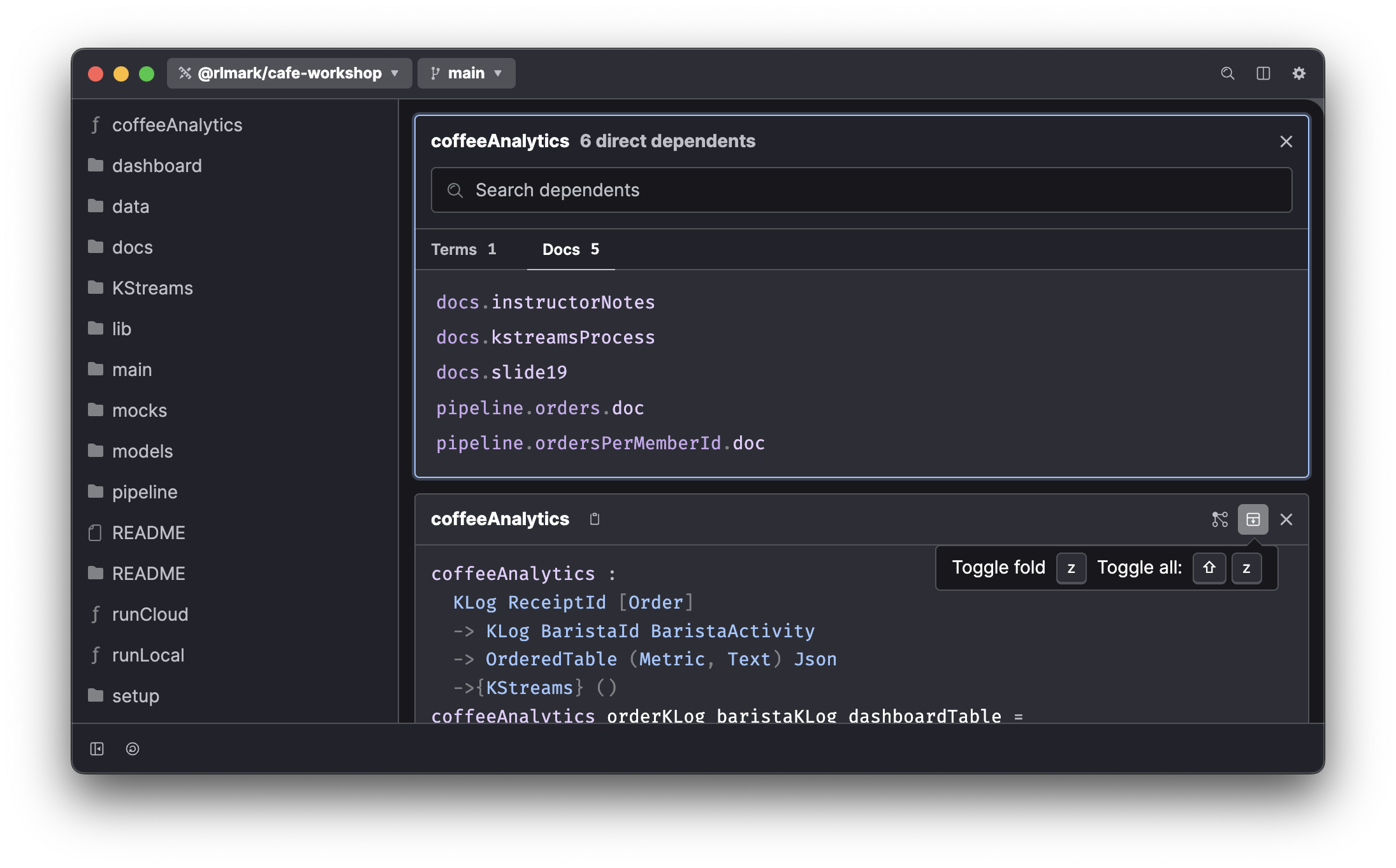Since each Unison definition is stored by the hash of its abstract syntax tree, the codebase manager knows exactly how definitions relate to one another. Our new feature, the dependents view, makes this information directly visible.
Dependents are the definitions that use a given term. We've long-since supported a clickable view of what a definition refers to (this is Unison, after all!) But until recently, it has been much harder to see backwards up the call chain. Now, the arrow points both ways!
The dependents view is available today in Unison Share and in the latest release of the Unison Desktop app.
The thought behind the Dependents UX
The dependents view follows a consistent pattern in both Unison Share and the Unison Desktop app: clicking the dependents icon for a definition opens a separate card. The card further distinguishes references by category: into functions, tests, types, abilities, and docs.
These details matter. A modal would get in the way if you need to return to it repeatedly, but a card can stay open while you continue working. For those especially well-connected terms, the card itself contains a scoped search bar.
You'll be seeing more of this card-based design system in Unison in the future. Our plans include more card interactions that organize context you'd otherwise have to hold in your head. For example, you might persist a card containing project search results to free up your working memory; or, instead of repeatedly entering view in the CLI, you might drag reference definitions across columns for inspiration.
As ever, our goal with the dependents feature is to make your codebase easily navigable, so you can focus on what matters while programming. Give it a try, and let us know what you think.
✨ Happy coding,
The Unison team
